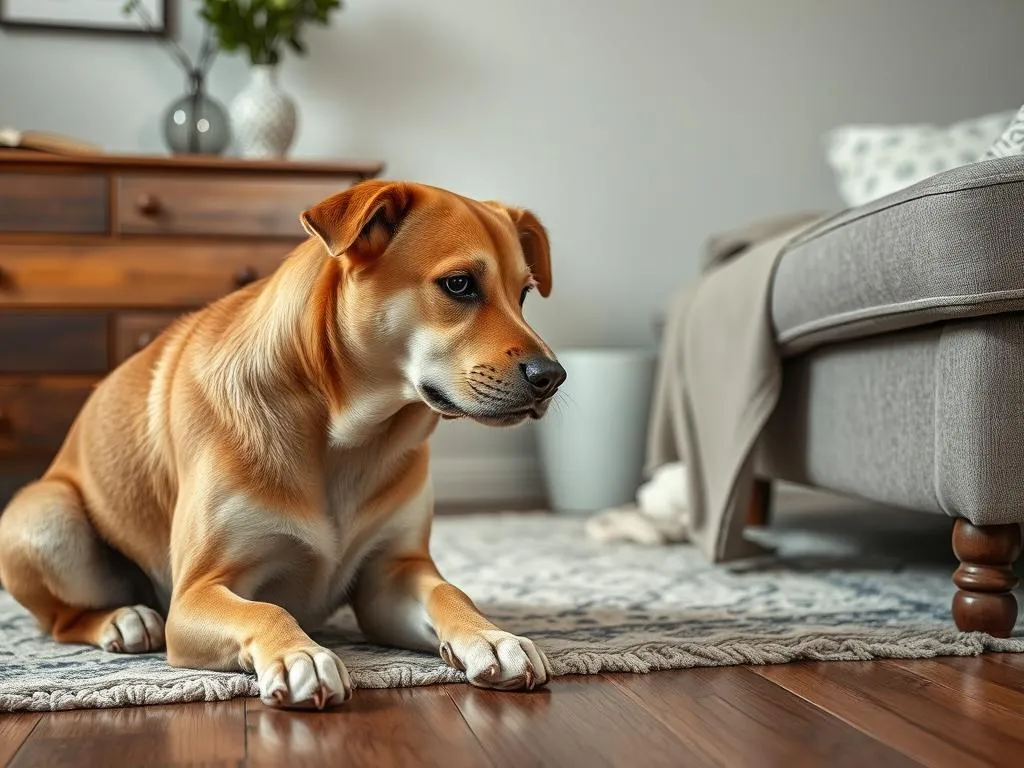
Dealing with dog urine odor in wood furniture can be a frustrating experience for any pet owner. The instinct to protect your beloved furniture while managing the challenges of pet ownership can often feel overwhelming. It’s essential to act quickly when accidents happen; otherwise, the lingering smell can become a permanent fixture, potentially damaging your wood surfaces. In this guide, we’ll explore effective techniques and solutions for tackling this common issue, ensuring your furniture remains in good condition and your home smells fresh.
Understanding the Issue
Why Dog Pee Smells
Dog urine contains a variety of substances, including urea, ammonia, creatinine, and uric acid. Each of these components contributes to the characteristic and often unpleasant odor associated with urine. When a dog has an accident on wood furniture, these chemicals can seep into the wood’s pores, making it difficult for the smell to dissipate naturally. Factors such as the age of the urine and the type of wood can exacerbate the smell, leading to longer-lasting odors.
The Impact of Dog Urine on Wood Furniture
Wood is a porous material, which means it can absorb liquids, including dog urine. When urine penetrates the wood, it can compromise the finish and integrity of the furniture. Stains can develop, and over time, untreated urine can lead to warping, discoloration, or even structural damage. Addressing these stains promptly is crucial to preserving the beauty and functionality of your wood pieces.
Immediate Actions to Take
Assessing the Damage
Before diving into cleaning, it’s essential to assess the severity of the stain and odor. Look for obvious signs of discoloration or sticky residue on the surface. If the area feels damp or has a strong odor, it’s likely that the urine has soaked deeper into the wood. If the furniture is unfinished or has a porous finish, the urine may have penetrated more deeply, necessitating a more thorough cleaning approach.
Quick Cleanup Tips
When an accident occurs, time is of the essence. Here’s a quick guide on how to tackle the problem immediately:
- Blot the Area: Use paper towels or a clean cloth to blot up as much of the urine as possible. Avoid rubbing, as this can push the urine further into the wood.
- Use Vinegar: Mix equal parts of white vinegar and water in a spray bottle. Spray the affected area lightly and blot again. Vinegar can help neutralize the odor.
- Air Dry: Allow the wood to air dry completely before moving on to deeper cleaning methods.
Deep Cleaning Methods
Homemade Solutions
Homemade cleaning solutions can be highly effective and are often readily available in your kitchen.
Vinegar and Water Solution
- Ingredients: Equal parts white vinegar and water.
- Mixing Instructions: Combine the vinegar and water in a spray bottle.
- Application Method: Lightly spray the affected area and let it sit for 5-10 minutes before blotting with a clean cloth.
- Drying Time: Allow the area to air dry completely.
Baking Soda Paste
- How to Create: Mix baking soda with a small amount of water to form a thick paste.
- Application: Spread the paste over the stained area and let it sit for several hours or overnight. Baking soda acts as an odor absorber.
- Removal: Wipe off the paste with a damp cloth and let the area dry.
Enzyme Cleaners
Enzyme cleaners are specifically designed to break down the proteins in urine, effectively eliminating the odor. Look for products labeled as enzyme-based, and follow the application instructions carefully. Recommended brands often include Nature’s Miracle and Rocco & Roxie, but be sure to test the product on an inconspicuous area of the wood first.
Commercial Products
If homemade solutions aren’t enough, consider using commercial products that specialize in pet odor removal. When selecting a product, look for those that are safe for wood surfaces and specifically designed to neutralize pet odors. Always follow the manufacturer’s instructions for application, and test the product on a small, hidden area before full use.
Addressing Residual Odor
Identifying Remaining Odor
After cleaning, it’s essential to determine if any odor remains. Conduct a sniff test by getting close to the area. If the smell persists, it may be necessary to repeat your cleaning process or try additional methods.
Additional Odor Neutralization Techniques
To ensure lingering odors are effectively managed, consider these techniques:
- Activated Charcoal or Baking Soda: Place bowls of activated charcoal or open containers of baking soda near the affected area. Both substances work as natural odor absorbers and can help eliminate residual smells over time.
- Odor Absorbing Gel or Spray: Products designed to neutralize odors rather than mask them can be highly effective. Look for gels or sprays that utilize natural ingredients for a safe and effective solution.
Preventative Measures
Training Your Dog
One of the best ways to prevent future accidents is through proper training. Basic house training can significantly decrease the likelihood of accidents on your furniture. Here are some training tips:
- Establish a Potty Routine: Take your dog outside regularly, especially after meals and naps.
- Positive Reinforcement: Reward your dog for pottying in appropriate areas to reinforce good behavior.
- Designate a Potty Area: Establishing a specific outdoor area for your dog can help them learn where it’s acceptable to relieve themselves.
Regular Maintenance of Wood Furniture
Maintaining your wood furniture can help minimize the effects of any accidents that may happen. Here are some tips to keep your wood in top shape:
- Regular Cleaning: Use a gentle wood cleaner regularly to maintain the surface and prevent buildup that can trap odors.
- Protective Finishes: Consider using protective finishes designed for wood, which can create a barrier against stains and odors.
- Immediate Cleanup: As with any spills, addressing them right away will help prevent long-term damage.
Conclusion
In summary, knowing how to get dog pee smell out of wood furniture is essential for any pet owner. By understanding the nature of dog urine and its impact on wood, you can take the necessary steps to address stains and odors promptly. Use homemade solutions or commercial products as needed, and always assess the damage thoroughly.
Remember, effective training and regular maintenance of your wood furniture are crucial in preventing future accidents and prolonging the life of your beloved pieces. With these tips, you can maintain a pet-friendly home without sacrificing the quality and appearance of your furniture.









